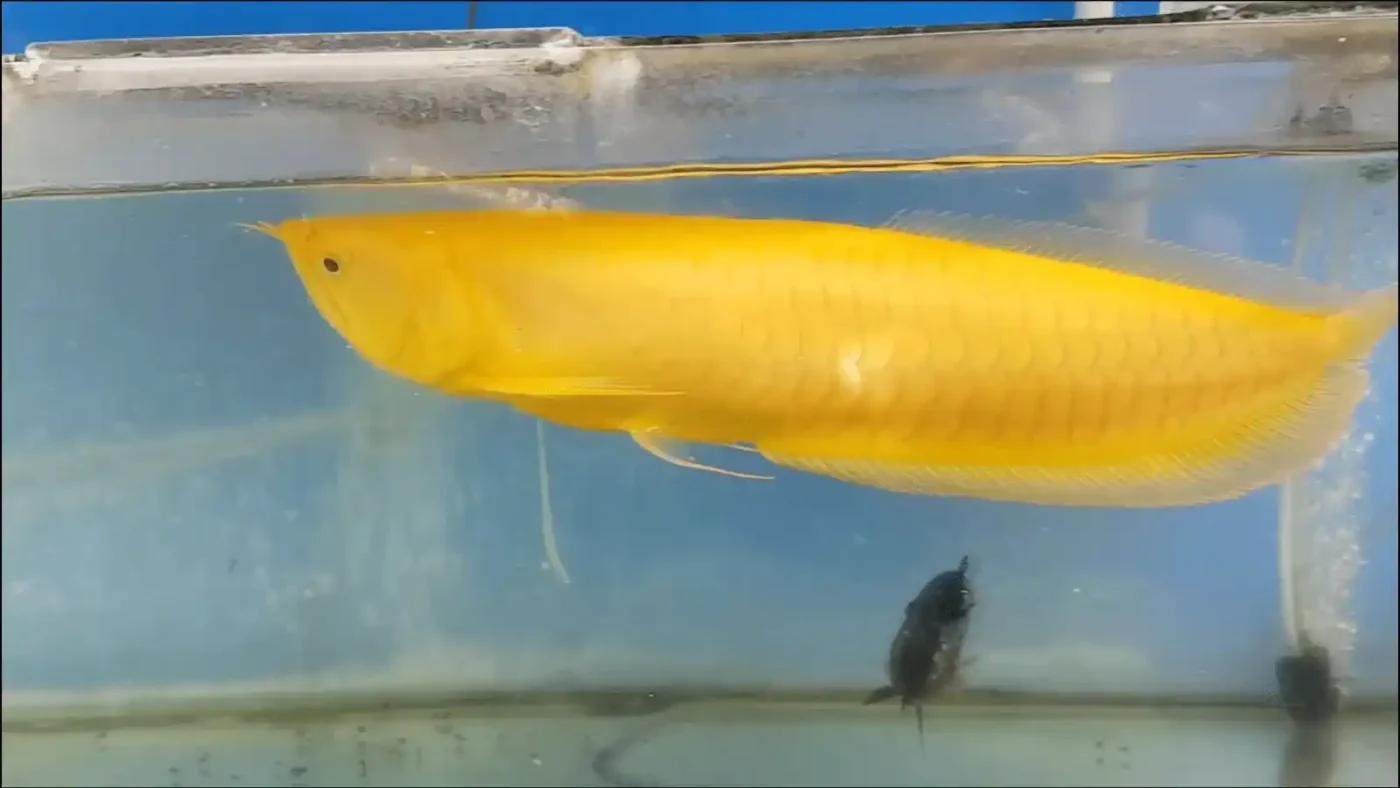The Ultimate Guide to Arowana Fish Tank Setup: Expert Tips and Tricks
The Ultimate Guide to Setting Up Your Arowana Fish Tank: Expert Tips and Tricks
Welcome to the captivating world of arowana fish! If you’re considering setting up an aquarium for these majestic creatures, you’re in for an exciting journey. In this comprehensive guide, we’ll walk you through the essential steps to create the perfect arowana fish tank setup. Get ready to dive into a world of aquatic wonder!
Understanding Arowana Fish Tank Setup and Arowana’s Needs
Before we delve into the tank setup, it’s crucial to understand the unique characteristics and needs of Arowana fish:
- Origin and Species: Arowana, also known as dragon fish, belong to the Osteoglossidae family. They’re native to freshwater habitats in South America, Africa, and Asia.
- Size and Lifespan: These fish can grow up to 3 feet long and live for 10-15 years, sometimes even longer with proper care.
- Behavior: Arowanas are known for their intelligence, curiosity, and ability to jump out of water.
Understanding these traits will help you create a more suitable environment for your Arowana.
The Malaysian Red Arowana, a sought-after variety, demands a spacious and well-equipped tank to accommodate its needs. With their vibrant colors and regal presence, these fish are true showstoppers in any aquarium setup.
Choosing the Right Tank Size
When it comes to arowana fish, bigger is always better. A minimum tank size of 180 gallons is recommended for a single adult arowana. However, many experienced aquarists suggest opting for larger tanks, such as the 220-Gallon Half-Moon Fish Tank, to provide ample swimming space and ensure the fish’s well-being.
This stunning half-moon tank not only offers a spacious environment but also adds a touch of elegance to your aquarium setup.
To create a thriving environment for your Arowana, you’ll need the following equipment:
a) Filtration System
- Type: Canister filters or sump systems are ideal for large Arowana tanks.
- Capacity: Choose a filter rated for at least 2-3 times your tank volume.
- Media: Use a combination of mechanical, biological, and chemical filtration media.
b) Heater
- Wattage: Aim for 3-5 watts per gallon of water.
- Thermostat: Ensure your heater has an accurate built-in thermostat.
- Placement: Install the heater near water circulation for even heat distribution.
c) Lighting
- Type: LED lights are energy-efficient and provide good illumination.
- Duration: Maintain a consistent 10-12 hour light cycle.
- Intensity: Opt for adjustable lighting to mimic natural conditions.
d) Air Pump and Stone
- Capacity: Choose an air pump rated for your tank size.
- Placement: Position the air stone to create gentle surface agitation.
e) Substrate
- Type: Fine gravel or sand is suitable for Arowanas.
- Depth: Aim for a 2-3 inch layer of substrate.
- Setting Up Your Arowana Tank: Step-by-Step Guide
Now that you have all the necessary equipment, let’s walk through the setup process:
Step 1: Clean and Position the Tank
- Thoroughly clean the tank with water (no soap).
- Place the tank on a sturdy, level surface away from direct sunlight.
Step 2: Install the Filtration System
- Set up your canister filter or sump system according to the manufacturer’s instructions.
- Ensure all connections are secure to prevent leaks.
Step 3: Add Substrate
- Rinse the substrate thoroughly to remove dust and debris.
- Gently add the substrate to create an even layer across the tank bottom.
Step 4: Install Heater and Thermometer
- Place the heater at a 45-degree angle near water circulation.
- Install a separate thermometer on the opposite side of the tank for accurate readings.
Step 5: Add Decorations and Plants
- Incorporate driftwood, rocks, and plants to create a natural environment.
- Ensure all decorations are securely placed to prevent injury to your Arowana.
Step 6: Fill the Tank
- Slowly add dechlorinated water to the tank, using a plate to deflect water and prevent disturbing the substrate.
- Fill the tank to about 80% capacity.
Step 7: Set Up Lighting and Air Pump
- Install your LED lighting system above the tank.
- Connect the air pump and position the air stone for gentle surface agitation.
Step 8: Cycle the Tank
- Add a bacterial starter to kickstart the nitrogen cycle.
- Monitor ammonia, nitrite, and nitrate levels using a water testing kit.
- Allow the tank to cycle for 4-6 weeks before introducing your Arowana.
- Creating the Perfect Water Conditions for Your Arowana
Maintaining optimal water parameters is crucial for your Arowana’s health:
- Temperature: 75-82°F (24-28°C)
- pH: 6.5-7.5
- Hardness: 5-15 dGH
- Ammonia and Nitrite: 0 ppm
- Nitrate: <20 ppm
Perform regular water tests and partial water changes (20-30%) every 1-2 weeks to maintain water quality.
- Feeding Your Arowana: A Balanced Diet
Arowanas are carnivorous and require a varied diet:
- Live Foods: Crickets, mealworms, small fish (feeder goldfish or guppies)
- Frozen Foods: Shrimp, krill, bloodworms
- Pellets: High-quality carnivore pellets formulated for Arowanas
Feed adult Arowanas 2-3 times a week, offering only what they can consume in 2-3 minutes per feeding.
- Common Challenges and Solutions in Arowana Care
Even with the best setup, you may encounter some challenges:
a) Jumping Behavior
- Solution: Use a tight-fitting lid or cover to prevent escapes.
b) Aggression Towards Tank Mates
- Solution: Choose compatible tank mates or consider keeping your Arowana alone.
c) Discoloration or Loss of Scales
- Solution: Check water parameters and adjust as needed. Consult a vet if the problem persists.
d) Refusal to Eat
- Solution: Vary the diet and ensure water conditions are optimal. Consider treating for parasites if the issue continues.
- Maintaining Your Arowana Tank: Long-Term Care
To keep your Arowana thriving, follow these maintenance tips:
- Perform regular water changes and tests.
- Clean the filter media monthly, replacing as needed.
- Trim plants and remove algae as necessary.
- Monitor your Arowana’s growth and behavior for any signs of stress or illness.
- Type: Canister filters or sump systems are ideal for large Arowana tanks.
- Capacity: Choose a filter rated for at least 2-3 times your tank volume.
- Media: Use a combination of mechanical, biological, and chemical filtration media.
Heating and Lighting
Arowanas thrive in warm water temperatures ranging from 78°F to 84°F (25.5°C to 29°C). Invest in a reliable aquarium heater to maintain a consistent temperature. As for lighting, these fish prefer subdued lighting conditions. Consider using LED lights or dimming your aquarium lights to mimic their natural environment.
Decorating the Tank
When it comes to decorating your arowana tank, simplicity is key. Opt for natural decorations like driftwood or rock formations, creating hiding spots and territories for your fish. Avoid sharp or abrasive decorations, as arowanas are known for their energetic swimming habits.
For a truly stunning centerpiece, consider adding a Platinum Arowana to your tank. This rare and mesmerizing fish will undoubtedly captivate you with its shimmering scales and graceful movements.
Tank Mates and Compatibility
While arowanas are often kept as solo specimens, some aquarists choose to introduce compatible tank mates. Larger semi-aggressive fish like tinfoil barbs, silver dollars, or Oscar fish can make suitable companions. However, exercise caution and research thoroughly to ensure a harmonious cohabitation.
For a unique addition to your arowana tank, consider the Black Diamond Stingray. These fascinating bottom-dwellers not only add visual interest but also contribute to the tank’s cleanliness by consuming leftover food.
Feeding Your Arowana
Arowanas are carnivorous fish with voracious appetites. Offer a varied diet consisting of high-quality pellets, frozen foods like shrimp or krill, and occasional live feeder fish. Invest in a reliable food source like the HARTZ Wardley Pond Floating Fish Food Pellets to ensure your arowana receives a balanced and nutritious diet.
These floating pellets are specially formulated to meet the dietary needs of pond fish, making them an excellent choice for your arowana’s main food source.
Maintaining Your Arowana Tank
Proper maintenance is key to ensuring the longevity and well-being of your arowana fish. Perform regular water changes, typically 25-30% weekly, to maintain optimal water conditions. Additionally, consider investing in a high-quality aquarium test kit to monitor vital parameters like ammonia, nitrite, and nitrate levels.
For comprehensive care guidance, refer to the Arowana Care Sheet, a valuable resource that covers all aspects of arowana husbandry, from tank setup to feeding and more.
With this step-by-step guide, you’re well-equipped to embark on the exciting journey of setting up the perfect arowana fish tank. Remember, patience, dedication, and a deep appreciation for these magnificent creatures are key to creating a thriving aquatic environment.
Happy fish-keeping!
By following this comprehensive guide, you’ll be well-equipped to create and maintain the perfect habitat for your Arowana. Remember, patience and consistency are key to successful Arowana keeping. With proper care, your majestic dragon fish will thrive and provide you with years of enjoyment.
Internal Linking Opportunities:
- “Arowana species and their unique characteristics”
- “Common diseases in Arowanas and how to treat them”
- “Best tank mates for Arowana fish”
Read more
- Fishkeeping World
- Aquarium Co-Op
- The Spruce Pets
- Seriously Fish – Scleropages formosus
- Fish Base – Osteoglossidae






